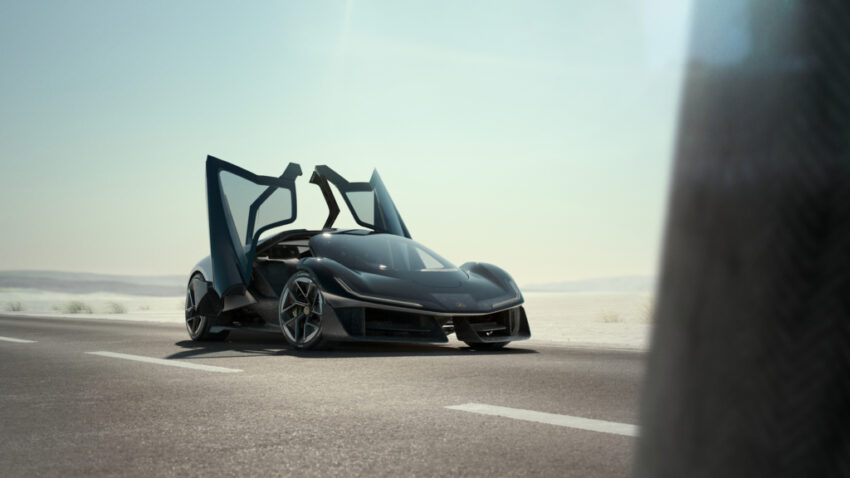Lotus Theory 1 hints at future electric sports cars
Lotus has revealed its ‘manifesto’ for the future with a radical three-seat sports car called the Theory 1.
Although not destined for production, Lotus says the Theory 1 indicates the brand’s future direction, embracing three core principles – digital, natural and analogue.
Predictably, that entails lots of marketing waffle but at its heart, Lotus says it wants to build high-tech, innovative vehicles that still engage with users on an emotional level and use the latest tech to deliver engaging performance on the road.
Core to all of that is a pure-EV powertrain putting out almost 1,000bhp, a kerb weight of less than 1,600kg and a host of active and passive aerodynamic features.
The Theory 1 features a 986bhp two-motor all-wheel-drive arrangement capable of getting from 0-62mph in less than 2.5 seconds and hitting a top speed of 199mph. Using a 70kWh battery, Lotus predicts a driving range of around 250 miles.
Inspired by the Lotus 49 Formula 1 car, the Theory 1’s motor and battery assembly act as a stressed member taking forces directly from the double wishbone suspension, meaning there’s no need for a complex and heavy subframe.
In addition, the rear spoiler is connected directly to the suspension for maximum effect and the car features a front diffuser and air curtain as well as low-drag ducts in the underfloor to aid airflow and cooling. Steering is via an electronic by-wire system and the Theory 1 runs on 20-inch front and 21-inch rear wheels shod in Pirelli P Zero Elect tyres.
While Lotus’s current EV line-up is a large saloon and SUV, the Theory 1 at least hints at something more in the spirit of the Esprit, with a radical wedge-shaped body that’s just 1,1140mm tall, and a three-seat configuration accessed by reverse scissor doors.
The concept is built from just 10 key materials rather than the 100 or more usually involved and huge portions are made from recycled materials, ranging from reformed ‘chop’ carbon fibre to recycled glass, and a cellulose composite and polycarbonate body.
As with every concept there’s a lot of wild technology that may or may not ever appear on a production car. This ranges from a steering-wheel mounted display to red and green LEDs on the suspension mounts visible from inside the cab and used to indicate when to brake or acceleration.
There is also the Lotuswear driver information system which ‘talks’ to the driver through the upholstery. Using inflatable bladders in the seat and steering wheel covers, the car can react and communicate in real time, for example pulsing on the relevant side of the steering wheel when the driver should make a turn. Developed with startup Motorskins, the system can also adjust seating grip and give haptic feedback to different degrees across five drive modes.
Unlike most cars, the Theory 1’s driver’s seat is fixed in position, with the pedals and steering wheel moving to meet the driver.
On the driver assistance front, the Theory 1 features four deployable LiDARs, six HD cameras, and a combination of long- and short-range radars and ultrasonic sensors that scan for obstacles at a radius of up to 200m around the car.
Ben Payne, vice president of design at Lotus Group said: “With Theory 1, we’ve built on everything Lotus has achieved so far in its 76-year history, to push the boundaries for what it means to drive a performance vehicle.
“We want to demonstrate that you don’t need to compromise – with both digital and analogue capabilities working harmoniously in the future car. In doing this, we are able to bring drivers the best possible immersive driving experience with raw emotion, functionality and connectivity, at the core.”
